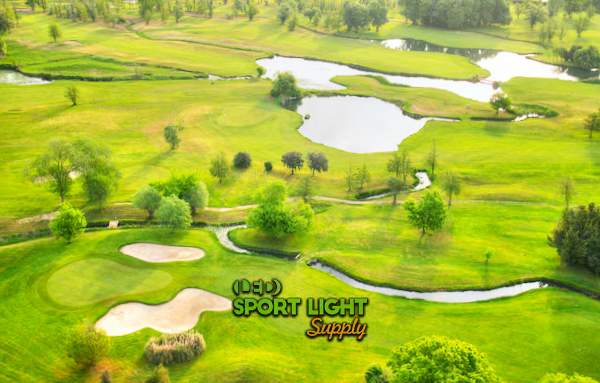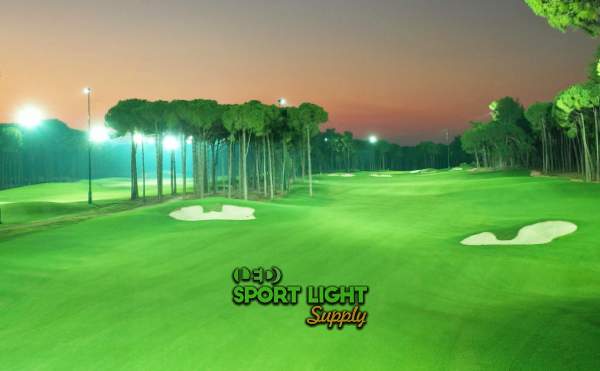
Golf courses are known for their carefully designed layouts and the unique challenges they present to players. Whether set against rolling hills, coastal dunes, or tranquil woodlands, each course offers a distinct experience shaped by its dimensions and strategic design elements. As the sport continues to grow in popularity, there is an increasing focus on innovations that enhance both the game and the overall atmosphere of the course. Among these advancements, the integration of LED lighting has become a transformative addition, enabling play to continue beyond daylight hours while preserving the course’s aesthetic qualities.
Below, we explore the fundamental aspects of golf course dimensions, their impact on the game, and the role that modern LED lighting technology plays in extending playtime and enhancing the overall golfing experience.
Table of Contents
Toggle A traditional golf course consists of 18 holes, each varying in length and complexity to challenge golfers of all skill levels. The cumulative length of an 18-hole course typically falls between 6,500 and 7,000 yards, though courses can be shorter or longer depending on their design philosophy. Courses with shorter overall distances are often referred to as “executive courses” and are favored by players seeking a quicker game. Conversely, championship courses, which may exceed 7,200 yards, are designed to test the abilities of more advanced golfers.
A traditional golf course consists of 18 holes, each varying in length and complexity to challenge golfers of all skill levels. The cumulative length of an 18-hole course typically falls between 6,500 and 7,000 yards, though courses can be shorter or longer depending on their design philosophy. Courses with shorter overall distances are often referred to as “executive courses” and are favored by players seeking a quicker game. Conversely, championship courses, which may exceed 7,200 yards, are designed to test the abilities of more advanced golfers.
Within a regulation golf course, individual hole lengths can range significantly. Par-3 holes generally measure between 100 and 250 yards, requiring precise shots to reach the green. Par-4 holes, which are more common, can stretch from 300 to 450 yards, while par-5 holes may extend beyond 500 yards, challenging players to achieve longer drives while navigating the course’s strategic elements.
Each hole is assigned a “par” rating based on its length and difficulty, with the cumulative par for a full course usually set between 70 and 72 strokes. Course designers often vary the sequence and complexity of holes to maintain a balance between accessibility for casual players and challenges for seasoned golfers.
The tee box serves as the starting point for each hole. These areas are typically rectangular, with dimensions ranging from 4 to 6 feet in width and 10 to 15 feet in depth. Multiple tee boxes are often provided for each hole to accommodate players of different skill levels, offering varying angles and distances to the fairway.
Strategic positioning of tee boxes is crucial for controlling the difficulty of a hole, as the angle and elevation can significantly impact a golfer’s opening shot. Some courses feature elevated tees to provide players with a better view of the hole, enhancing the experience while also increasing the challenge.
The fairway is the main playing area between the tee box and the green, typically featuring well-manicured grass that provides an optimal surface for shots. Fairways can vary in width, generally ranging from 30 to 50 yards, depending on the course design. Narrow fairways require more precise shots, adding a layer of difficulty, while wider fairways are more forgiving, catering to a broader range of players.
Course architects often introduce strategic elements such as undulations, bunkers, and water hazards within fairways to add complexity. These features compel players to carefully plan their shots, considering not just distance but also placement to avoid obstacles and secure a clear approach to the green.
The green is where players aim to complete each hole by sinking the ball into the cup. Greens are typically between 5,000 to 6,000 square feet, though they can vary widely in size based on the course’s design and level of difficulty. The surface of a green is meticulously maintained to ensure a smooth roll for putts, with contours and slopes strategically incorporated to challenge players’ ability to read breaks and speed.
While the green may appear straightforward, its undulations and subtle breaks can dramatically affect the difficulty of a hole. Designers often place the hole in positions that require golfers to make precise, well-judged putts, adding to the complexity and satisfaction of a successful round.
 In recent years, golf courses have increasingly turned to LED lighting systems to extend playable hours and create a more inviting environment for both players and spectators. Unlike traditional lighting, LEDs provide superior illumination quality, enabling golfers to play into the evening without compromising visibility. This is particularly beneficial during shorter winter days or for events that continue after sunset.
In recent years, golf courses have increasingly turned to LED lighting systems to extend playable hours and create a more inviting environment for both players and spectators. Unlike traditional lighting, LEDs provide superior illumination quality, enabling golfers to play into the evening without compromising visibility. This is particularly beneficial during shorter winter days or for events that continue after sunset.
LED lighting not only enhances visibility but also brings aesthetic benefits, as these systems can be fine-tuned to highlight specific features of the course. Whether illuminating a dramatic water hazard or a scenic green, LED fixtures can be strategically placed to enhance the ambiance while maintaining the integrity of the course’s layout.
Driving ranges and practice areas have unique lighting needs due to their dimensions and usage patterns. Typically, a driving range is between 250 and 400 yards long and 100 to 200 yards wide, requiring extensive lighting coverage. LED fixtures are designed to provide even illumination across the entire range, allowing golfers to practice under optimal conditions regardless of the time of day.
For putting greens and short-game practice areas, more focused lighting is used to accentuate the contours of the greens, assisting players in reading the breaks and slopes accurately. The precise control offered by LED technology ensures that these areas are lit effectively without causing glare or shadows that could affect play.
The successful integration of LED lighting into a golf course requires careful planning to avoid disrupting the natural beauty of the landscape. Designers must consider the height, angle, and intensity of each fixture to ensure optimal coverage without overwhelming players with excessive brightness. For instance, placing lights at higher elevations can cast broader beams over fairways, while lower, more focused lights are ideal for tee boxes and greens.
Adjustable LED fixtures allow courses to tailor lighting intensity according to specific needs, whether it’s enhancing visibility for night play or creating a softer, ambient glow for evening events. This flexibility ensures that the lighting complements the course’s design, preserving its character while adding functionality.
LED lighting is not only effective in improving visibility but also contributes to the sustainability of golf courses. These systems consume significantly less energy compared to traditional lighting, reducing operational costs while minimizing the environmental impact. The longevity of LED fixtures further enhances their value, as they require less frequent replacement and maintenance.
Golf courses that prioritize sustainability can benefit from integrating LED technology into their design, creating an energy-efficient solution that aligns with modern environmental standards. As the industry continues to evolve, the adoption of these technologies demonstrates a commitment to preserving the natural beauty of the sport while embracing innovation.
Golf courses are known for their visual appeal, with landscapes carefully crafted to enhance the player experience. The addition of LED lighting, when thoughtfully integrated, can enhance these aesthetics, highlighting the unique features of each course. Whether it’s illuminating a water feature, highlighting a tree-lined fairway, or casting a soft glow over a scenic green, the strategic use of lighting enhances both the visual and functional aspects of the course.
Modern LED systems allow for dynamic lighting that can be adjusted according to the time of day or specific events. This adaptability ensures that the course remains both visually appealing and highly functional, regardless of the conditions.
The integration of thoughtful course design with modern LED lighting technology is transforming the golfing experience. By extending play into the evening and enhancing the visual appeal of courses, LED systems provide both functional benefits and aesthetic enhancements. As the sport evolves, these innovations allow golf courses to maintain their tradition while embracing sustainable, energy-efficient solutions that cater to players and spectators alike.
Drop us a line to receive a free lighting design